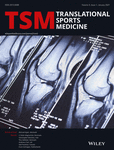Conditioned pain modulation is not altered in recreational athletes with Achilles tendinopathy
Funding information
This research was funded by the National Research Foundation of South Africa (CPRR14072680498); the European Union's Horizon 2020 research and innovation programme under the Marie Sklodowska-Curie Grant Arrangement No 690850 (RUBICON); and the Margaret McNamara Education Grant.
Abstract
Background
Altered central pain mechanisms is a feature of other chronic pain states and upper limb tendinopathies. It is uncertain whether the same applies to chronic Achilles tendinopathy (AT).
Objective
To investigate altered central pain mechanisms in chronic AT by assessing conditioned pain modulation (CPM) in recreational athletes with and without chronic AT.
Methods
Recreational athletes with chronic AT (ATN) rated their tendinopathy symptoms on the VISA-A, and short forms of the McGill Pain Questionnaire and the Brief Pain Inventory. The CPM effect was triggered in athletes with tendinopathy (ATN, n = 123) and without tendinopathy (CON, n = 100). The cold pressor test was the conditioning stimulus, and pressure pain was the test stimulus.
Results
Participants with tendinopathy had lower pressure pain thresholds before (median (IQR) [ATN: 417 (364 − 516) vs CON 601 (459 − 724), P < .01] and during [ATN: 458 (358 − 550) vs CON 633 (506 − 753), P < .01] cold pressor test. No differences were observed for the CPM effect between the two groups (P = .49).
Conclusion
There was no difference in the CPM effect between athletes with AT and pain-free controls. Perhaps because tendon pain is a peripheral phenomenon, there are no alterations in descending pain modulation with chronic AT.
CONFLICT OF INTEREST
The authors report no competing interests in the conduct of and write up of the research study.
Open Research
DATA AVAILABILITY STATEMENT
Individual, de-identified data collected in the study will be made available following publication, for aims approved in the proposal and upon reasonable request to the corresponding author on [email protected]. These data will be available for 3 years after publication.




